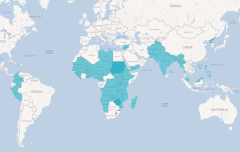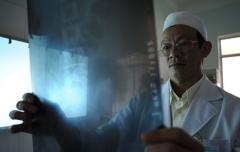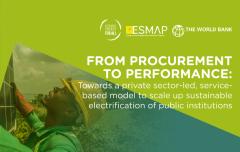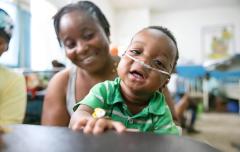Powering Healthcare Intervention Heatmap
Following the launch of the Health Facility Electrification (HFE) Energy Compact (Sept 2021), SEforALL circulated a sector-wide survey in October 2021 to document past, ongoing, and future HFE interventions. The objective of this resulting heatmap is to aid sector stakeholders in identifying opportunities for coordination and collaboration, as well as provide a detailed overview of sectoral progress towards the ambitions and targets under the Energy Compact.
- As of April 2022, this heatmap includes 270 interventions by 81 organizations*, across 56 countries. Information on individual interventions can be found by accessing our accompanying database.
For feedback, country-specific questions, amendments, or adding a new health facility electrification intervention to the Intervention Heatmap, please contact PoweringHealthcare@SEforALL.org
Key Findings
FINDING 1: MORE FACILITIES ARE BEING TARGETED COMPARED TO THE PREVIOUS 5 YEARS
Data analysis from completed interventions (2015-2020) versus ongoing/planned interventions (2021-…) shows a strong increase in:
While this is a significant increase, this still falls short of the sectoral target set under the Energy Compact, which calls for 25,000 facilities to be electrified by 2025.
FINDING 2: ACTION IS CONCENTRATED IN A FEW COUNTRIES
Health facility electrification efforts (past, present, and ongoing) are concentrated in the sub-Saharan African region. Approximately 44.9% of completed and 38.2% of ongoing/planned interventions (or projects) were in just five countries. The number of facilities targeted under all interventions are even more concentrated in the top five countries, with approximately 64.25% in completed, and 60.8% in ongoing/planned interventions. Interestingly, the list of the top 5 countries only partially overlaps, as countries may have many small-scale interventions, or conversely only a handful interventions at a large scale.
FINDING 3: INTERVENTIONS ARE INCREASINGLY FOCUSING ON LARGER POWER SOLUTIONS
The group of completed interventions are skewed towards the deployment of smaller size systems (1-250Wp); smaller solutions (e.g. solar lanterns, plug & play kits, or service-specific power solutions such as solar direct drive fridges) can be deployed rapidly and to a large number of facilities. The group of ongoing/planned interventions is significantly favoring the deployment of larger size systems, above 1kWp, showing that increasingly organizations are including facility-wide energy needs in their project design.
* Lead organizations that have responded to the survey and whose data is captured in the Intervention Heatmap: All In Trade Ltd, ARESS Sarl, Avencion Limited, Azimut 360, Catalyst Off-Grid Advisors, Children’s Investment Fund Foundation (CIFF), Clinton Health Access initiative (CHAI), Crown Agents Limited, Differ Community Power, EM-ONE Energy Solutions, Enabel, EnDev, Energy4Impact, FMO, GAVI, GIZ, Green Empowerment, Havenhill Synergy Ltd., International Centre for Sustainable Development (IZNE) at University of Applied Sciences Bonn-Rhein-Sieg, IOM, IPCS, IRENA, KYA-Energy Group, Little Sun Foundation, Millenium Challenge Corporation/MCA Benin, Muhanya Solar Ltd., Nuru Sarl, Odyssey Energy Solutions, Okra Solar, OnePower, Orange/GAVI, PEG Solar, Power for All, Raising Malawi, RES4Africa Foundation, RESOLVE, SEforALL, SELCO Foundation, SustainSolar, Swedfund, UNDP, UNICEF, UNOPS, We Care Solar, WindGen Power USA Inc. (PowerGen), World Bank, WRI, Zhyphen, Zuwa Energy. Partner organizations are not covered in the above list, but are captured in the published dataset.
The development of this heatmap was supported by

Related content

Data analysis
25 Apr 2022

Data analysis
19 Jul 2021

Knowledge brief
02 Dec 2021

Programme